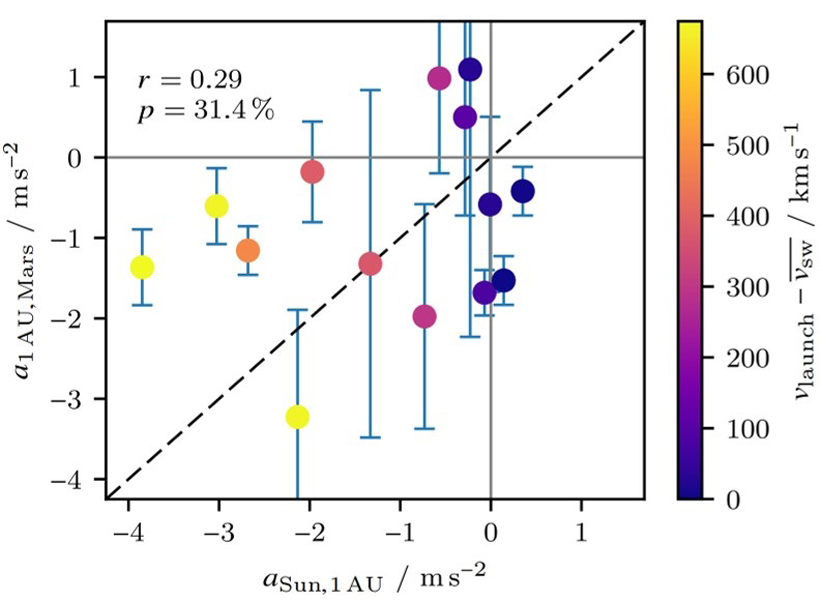Source: Journal of Geophysical Research: Space Physics
Interplanetary coronal mass ejections (ICMEs) are the major drivers of severe space weather near Earth and other planets. Freiherr von Forstner et al. [2018] provide multi-spacecraft observations of a set of ICMEs, associated shocks and resultant decreases of the flux of cosmic rays between the orbits of Earth and Mars. A new technique is developed to assess the kinematic evolution of ICMEs beyond 1 AU, which is then supported by modeling techniques. Stronger continuous deceleration between 1 AU and Mars is found for some events, indicating further complexity of the interaction of ICMEs with ambient solar wind in the outer heliosphere. This work advances our understanding of the kinematic evolution of ICMEs beyond 1 AU. Future observations by Solar Orbiter and Parker Solar Probe will complement the improving global picture of ICME evolution throughout the heliosphere.
Citation: Freiherr von Forstner J.L. et al., [2018], Using Forbush decreases to derive the transit time of ICMEs propagating from 1 AU to Mars, Journal of Geophysical Research: Space Physics, 123, https://doi.org/10.1002/2017JA024700
—Yuming Wang, Editor, JGR: Space Physics
Text © 2018. The authors. CC BY-NC-ND 3.0
Except where otherwise noted, images are subject to copyright. Any reuse without express permission from the copyright owner is prohibited.

